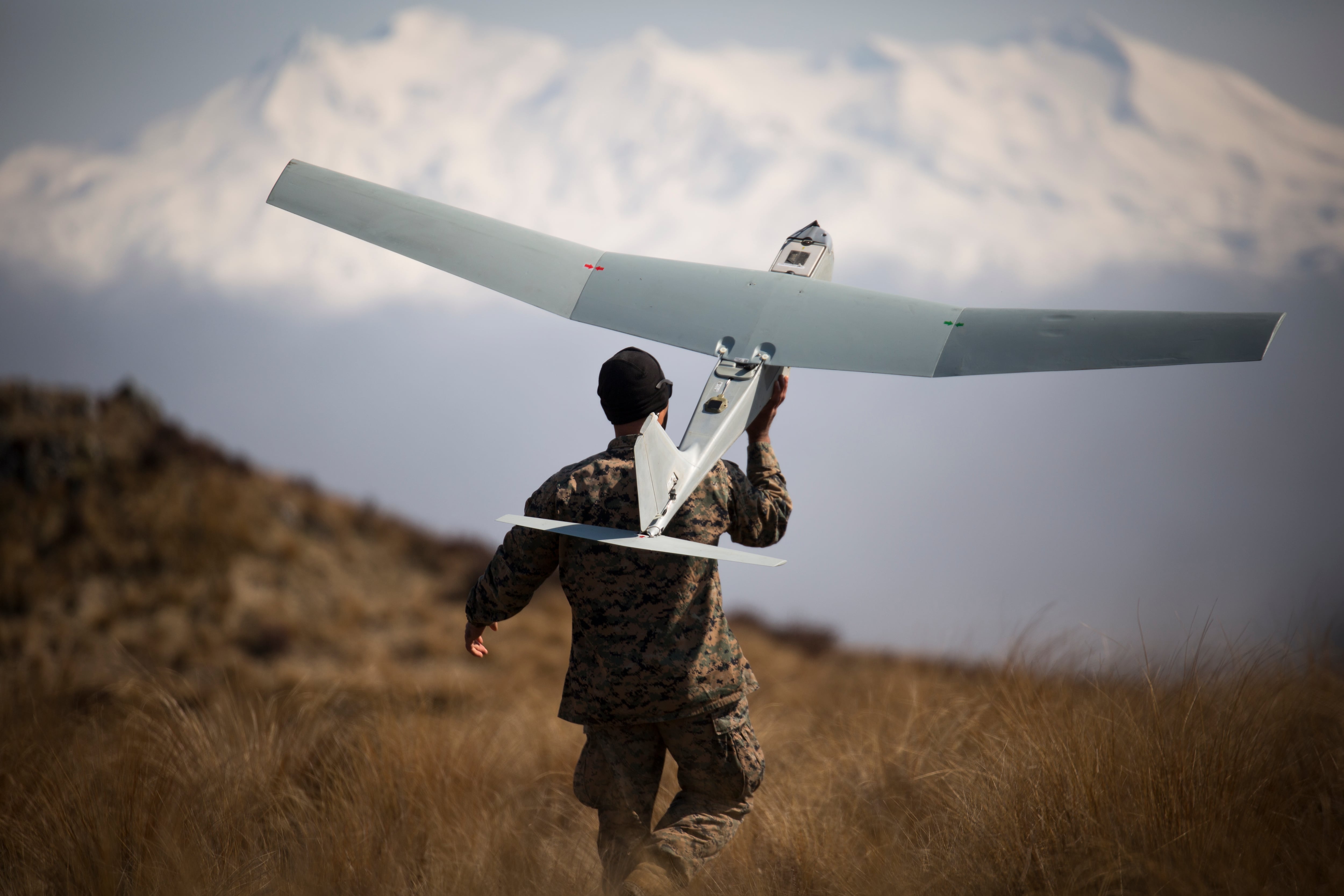The Marine Corps will consider establishing a new job field dedicated to robotics as it doubles down on that technology as part of a revamp of the force.
Intelligent robotics and autonomous systems could allow Marines to operate faster, more cheaply and at lower risk than before, states a document published Monday with updates to Force Design 2030, the Corps’ ambitious restructuring plan.
Marine leaders say recent conflicts ― particularly those between Ukraine and Russia, and Armenia and Azerbaijan ― have confirmed the need for the Corps to get better at employing autonomous systems.
“We clearly recognize and acknowledge the importance of intelligent robotic and autonomous systems,” Lt. Gen. Karsten Heckl, deputy commandant for Combat Development and Integration, said at a media roundtable Friday. “I feel like we’re in front of it right now. And we’ve got to stay there.”
RELATED

But Marine leaders aren’t yet sure how they will find or train people with the knowledge to operate those systems.
“Finding the structure, finding the right people and then getting them properly trained is a whole nother set of challenges,” Heckl said.
One thing Heckl said he does know: Robotics work won’t be relegated to a collateral duty or a secondary military occupational specialty.
At the roundtable Friday, Marine generals stressed that technology won’t replace human beings.
In the case of uncrewed aircraft that collect massive amounts of data, “you have to have the ability to do with that data what needs to be done so that humans who are the ultimate decision-makers have the ability to make the correct decision,” said Brig. Gen. Stephen Lightfoot, director of the Corps’ Capabilities Development Directorate.
By September, the Corps will incorporate robotics concepts and applications into its training and education centers, according to the Force Design update.
In the following year, leadership “will develop a strategy to recruit and retain personnel with IRAS knowledge” and “to integrate robotics specialties throughout the total force,” the update states.
That could mean forming an occupational field dedicated to the technology, according to the update.
But it has proven tough for the Marine Corps, as for the other services, to recruit and retain troops who possess the valuable technical knowledge that could translate to higher salaries in the civilian sector.
The Corps is trying out a variety of strategies to fill its tech gap. It is offering bonuses, making use of expertise reservists developed at their civilian jobs, and letting some people with in-demand skills join or rejoin at a higher rank than they otherwise would ― a program called lateral entry.
Lateral entry is one option the Marine Corps is considering as a way to lure people with robotics expertise, according to Monday’s Force Design update.
The update also raises the possibility of holding robotics competitions as a recruiting tactic.
“A lot of this discussion is undefined,” Heckl said. “What we do realize is the significance of this. There’s a lot of folks … that say this is the 21st-century equivalent of the machine gun. So this is a big deal.”
Irene Loewenson is a staff reporter for Marine Corps Times. She joined Military Times as an editorial fellow in August 2022. She is a graduate of Williams College, where she was the editor-in-chief of the student newspaper.








